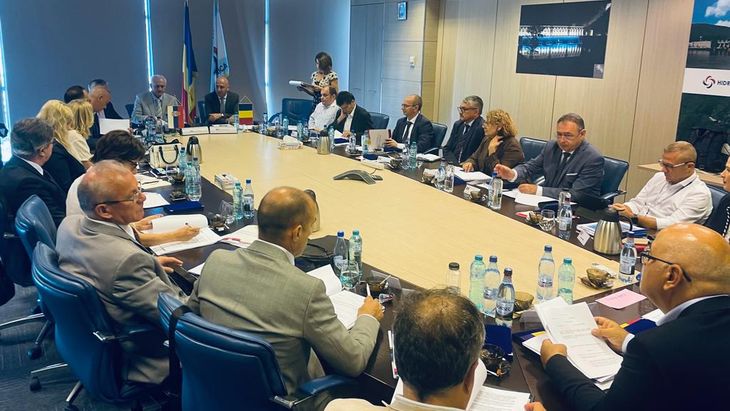The two energy companies involved in the operation of the hydropower and navigation system from the Iron Gates – Hidroelectrica (Romania) and EPS (Serbia), met on Monday in Bucharest during the 100th meeting of the Romanian-Serbian Joint Commission for The Iron Gates, Hidroelectrica officials say.
The main topics on the agenda of the event were the remediation, adaptation and rehabilitation of the HE Djerdap II lock, as well as informing the beneficiaries about the stage of additional protection works for the dissipator of the Iron Gates I spillway dam.
“We are delighted with the way the commitments we undertake together – Hidroelectrica and EPS, in common interest. We are honored by our friendship with the Serbian partner, a solid basis for the open dialogue between the two companies. We are talking about a partnership that has exceeded the 50-year mark, an association based on honor, mutual respect, responsibility and work.
“Furthermore, the Iron Gates project is an eloquent example of coordination between friendly countries for effective resource management. I would like to take this opportunity to welcome in the most laudatory terms the collaboration between Romania and Serbia, which ensures the sustainable exploitation of the hydro-energy and navigation system on the Danube, thus contributing to the economic development and energy security of the region,” said Bogdan Badea, the president of the Hidroelectrica directorate.
The construction of the Iron Gates I System began on September 7, 1964, with the official inauguration of the site. The objective is symmetrical with respect to the Danube axis and is composed of two hydroelectric plants with six hydro aggregates each with high-capacity Kaplan turbines, two locks with dimensions of 310m x 34m (one for each side) and a spillway dam with 14 spillways (7 for each part). The first objective put into operation on the Romanian side was the lock, on August 14, 1969. The aggregates from the plant were put into operation first on August 14, 1970, and the last in December 1971. The official inauguration of the objective took place on May 16, 1972. In terms of size and installed power, the aggregates in the plants were the largest of their type in the world. In the same way, due to the dimensions of the slats and the fall, the locks at Portile de Fier I are included in the list of the largest constructions of this kind in the world.
The construction of the Iron Gates II System began in 1977 with the signing of the Agreement between the Governments of Romania and the former Yugoslavia. The objective has a non-symmetrical configuration, the Danube being barred in two fronts (the main one on the main branch of the Danube and the second one on the Gogoșu branch). The objective is composed of a basic plant with 16 bulb-type aggregates (8 for each part put into operation between 1984 and 1986), two additional plants (functional since 1994, the Romanian one, respectively since 2000, the Serbian one), three locks (two on the Romanian side and one on the Serbian side) and two spillway dams (the Romanian one on the Gogoșu arm, the Serbian one in the main barrage front).
